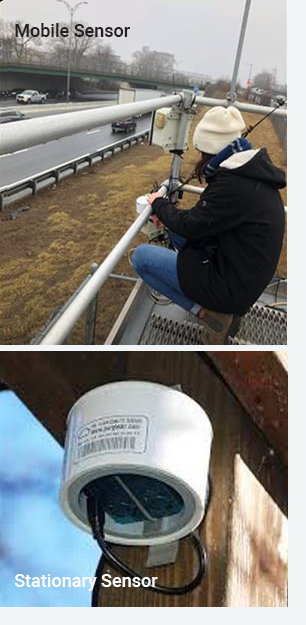Air Quality: Community Engagement Helps Make the Invisible Visible
By Mark Chandler, Director of International Research Initiatives
The air around us is made up of many gases and particles—each so small that, for the most part, they’re invisible to the naked eye. Yet those invisible gases, from ground level ozone to particulates, often cause enormous health problems when they enter our more sensitive systems, such as the lungs or eyes. In fact, air pollution is directly responsible for the death of over 7 million people each year, and approximately 90% of the world’s population is exposed to air pollution at some point.
As people and economies around the world have faced tight restrictions on mobility and activity in an effort to slow the spread of COVID-19, our air quality has generally improved. In many parts of the world, the air is now visibly better. Because people respond to what they can see and understand, we’re at a unique moment to reflect on and ultimately improve air quality in all communities.

Historically, it’s been up to national or international organizations (from the EPA in the U.S. to the World Health Organization) to mitigate the threat of air pollution through the development of air quality standards and associated regulations. These efforts have led to both significant improvements in air quality and a reduction in negative health complications. But levels of air pollution remain problematic for many people, including those marginalized by society due to economic or social conditions and others who are vulnerable for individual reasons, such as health conditions (e.g., asthmatics), their age (e.g., young and elderly), or occupation (e.g., landscapers). Further action on air quality is needed to improve human health—and it can now happen at the local level.
One key to changing the current threat of air pollution is educating the communities most impacted by it, allowing them to reduce their exposure when and where it is most (cost) effective. Currently prescribed solutions (e.g., air filters, staying indoors, reducing emissions) are often restrictive or costly. And in part because air pollution is invisible, the benefits of taking action are often not immediately clear. But communities have started to monitor local air quality to provide information that is both relevant and actionable to residents—filling in gaps missed by governmental monitoring with much needed data.
Behind many of these community-based monitoring efforts is a new generation of low-cost sensors that can provide immediate information to communities about their own air quality. Earthwatch is now collaborating with local communities and schools to deploy these sensors to not only collect valuable air quality data but to build the local capacity to interpret and benefit from that information.
Here are a few tips and suggestions to help local leaders successfully deploy these low-cost air sensors:
 What sensors would you recommend for community deployment?
What sensors would you recommend for community deployment?
There are two basic kinds of sensors. Mobile sensors collect data as you take the sensor with you, while stationary sensors can be set up outdoors (e.g., at a home, school, park, etc.) or indoors (inside a classroom, cafeteria, or office) to collect data continuously at one place over time. Mobile sensors are useful to track where there may be local sources—or which “journeys” may have pollution hotspots. Stationary sensors give you a longer-term window into local pollution, but only at one place.
There are many sensor manufacturers available, and you can find background information on their data reliability by looking at tests performed at South Coast Air Quality Management District and the EPA. Most sensors can be purchased online.
Earthwatch has chosen to deploy Purpleair sensors because they meet two key criteria: 1) the data quality of the sensors has been tested and data quality control measures are in place, and 2) the data is easy to find and openly accessible to the broader community of the concerned public, scientists, and managers—helping to increase our overall knowledge of air quality.
Purpleair sensors need access to power and Wi-Fi—but have been successfully deployed around the world. For those with intermittent or problematic Wi-Fi, Purpleair makes a model with an SD card that can store the data until it’s downloaded to your computer.
 How can you participate?
How can you participate?
You can either acquire and install a sensor on your own, or join a community effort if there is one in your neighborhood. There’s even a Purpleair Facebook group where individuals ask questions and get support from the broader community of Purpleair sensor owners! Increasingly, there are regional initiatives that allow people and schools to borrow air quality sensors as well. South Coast Air Quality Management District in Southern California has a sensor library system for people in its region, for example. Many regions also have local organizations that can provide support (e.g. Clean Air Carolina) to individuals or local organizations as they begin their journey.
You can also use a growing number of apps to learn about your local air quality. Many of these apps are now included as part of your weather app, but some are specialized and can provide local data from a sensor near you. “Local haze” is one such app that pulls in information from open-sourced air quality sensors nearest to you.
Sign up for the Earthwatch Newsletter
Be the first to know about new expeditions, stories from the field, and exciting Earthwatch news.